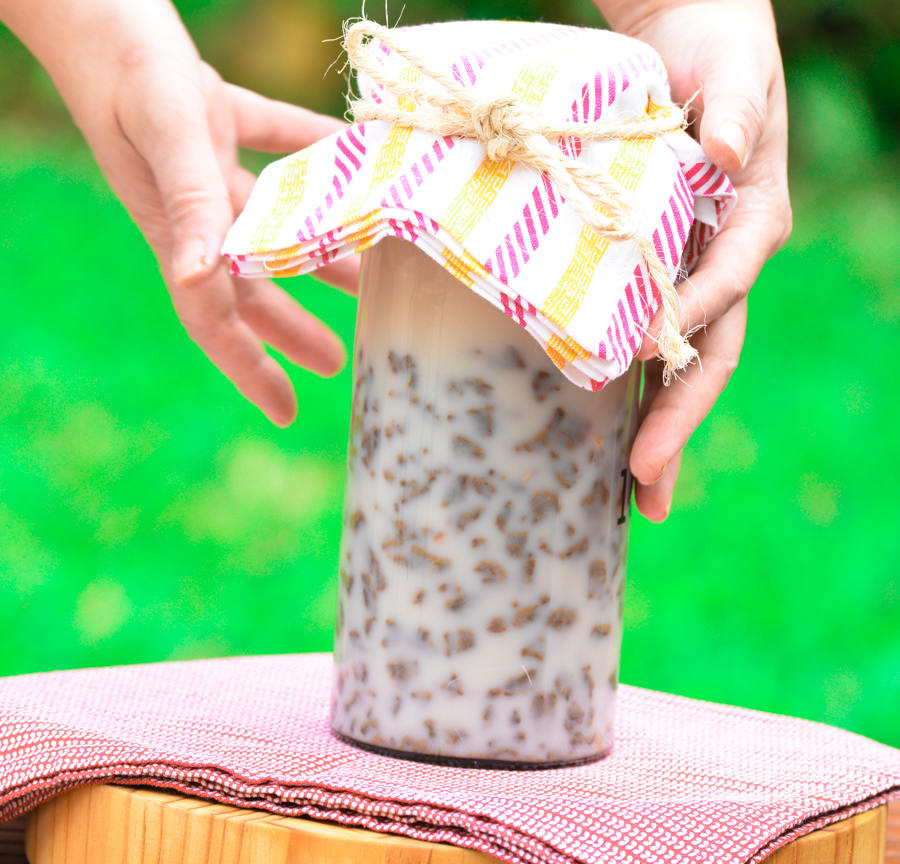
Awarma, Qawarm, Lebanese Lamb Confit
dairy free, Eggless, Gluten-free, Keto, Low Carb, Nut-free, Sugar Free
Awarma/ Qawarma/ Lebanese Lamb Confit is a preserved meat made by cooking down minced or diced lamb with a copious amount of rendered lamb fat!
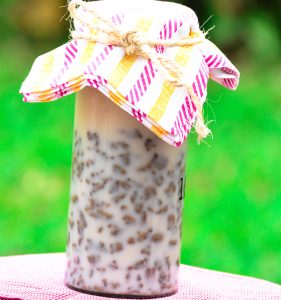
Prior to the birth of refrigeration, awarma was cherished by villagers in the mountains of Lebanon. People back then preserved food as a matter of survival, and awarma was a way of preserving meat as to safely stop its spoilage; this was specially created so that the families didn’t go hungry in winter and a way to sustain them during the cold months and provide them with a safe source of protein at a time when people mostly lived on what they and their neighbors produced themselves, due to the limited transport systems and the lack of refrigeration. The awarma used to be sealed and stored in earthenware jars far away from sunlight – these days glass jars are used instead.
While animal fats are not typically equated with the same healthfulness to the plant based fats, still animal fats like awarma are natural produce and are much healthier than commercial hydrogenated fats. Our ancestors ate awarma and were healthy and free of modern diseases. Now this is a long debate, just speaking my mind loudly.

How to eat awarma?
There is no reason you can’t still have awarma, it is incredibly rich and not at all difficult to prepare; keep a jar in your fridge, it comes in handy to flavor your hummus, add depth to your kishik, scramble it with eggs, make pita meat tomato sandwiches or even awarma fatayer.
Though our ancestors stored it for centuries before refrigeration was invented, but today I would advise you to put it in the fridge. It keeps well for 1 year.

What fat is used to make awarma?
Usually the best fat used in awarma is the edible sheep’s tail fat ( leyya) – fat of some breed of sheep found in Lebanon and the Middle East, but still any lamb fat would do well. My butcher explained the second option would be the fat of lamb breast since this cut carries a copious amount of fat.
What meat is used to make awarma?
If you are using minced lamb meat almost any cut is o.k, but if you are dicing the meat as I did, I would recommend you use loin or rump since these cuts are tender and full of flavor.
How to make Awarma?
First off, the meat is cured with a great quantity of salt as part of the preserving process. Seasoning the meat with spice is totally optional.
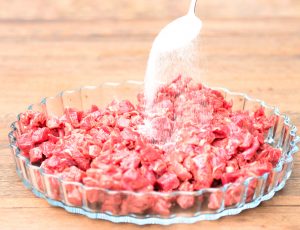
You need to render the fat before adding the meat: It takes about 25 minutes to render it. The slow version will make your awarma last longer. Cut the fat into small chunks, or even ask your butcher to grind it for you. If you are going to be dicing the fat yourself, make sure it is chilled to make it easier to cut. Use a serrated knife and dice into small cubes, the smaller the better.
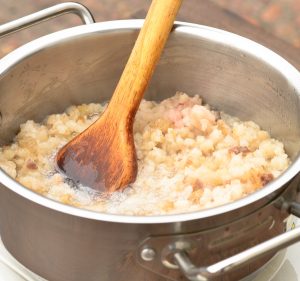
Add the fat to a heavy bottomed stockpot. Simmer over medium- low heat, stirring and scraping occasionally with a wooden spoon. It takes about 30 minutes for the fat to melt and become clear and no more cloudy, leaving small bits of browned fats floating on the surface.
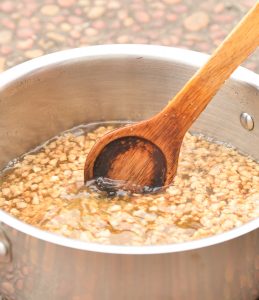
Using a fine sieve, strain the melted fat and get rid of those small bits. You can keep them, most folks do keep them, I don’t.

Return the rendered fat back to the stockpot and heat once again, add the seasoned diced or minced meat and simmer uncovered, stirring occasionally. Cook slow and low until meat is cooked through and well browned – it takes about 30 minutes. Remove it from heat, and set aside to completely cool down.
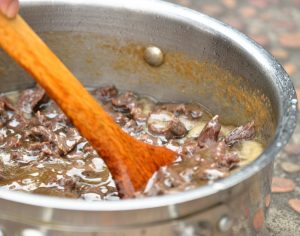
Ladle the awarma into a large clean jar or small jars. As you can see the fat has eventually completely covered the meat. The large amount of fat pushes air out and liquid down. The removal of air creates a tight seal preventing bacteria from growing. I think that’s the scientific explanation to how our ancestors stored awarma at room temperature without the need for refrigeration. But still I would recommend you put the jar of awarma in the fridge, to be 100 pecent on the safe side.
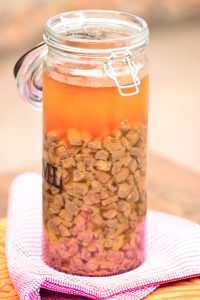
Once it cools down the fat hardens, creating a solid of white and brown mosaic! It is preferable to store the awarma in the fridge. Seal the lid and I would recommend too that you cover the jar with a piece of cloth to keep your awarma jar moisture free.
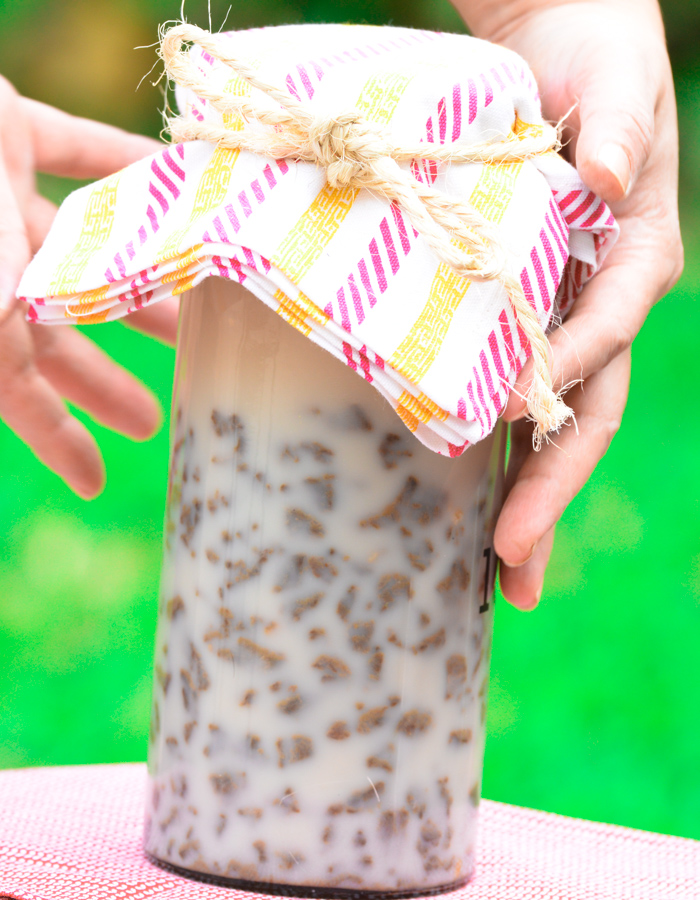
Ingredients:
- 1 kg / 2 lb. 4 oz. lamb meat, diced or into 2.5 cm/1 inch cubes, If you are using minced lamb meat almost any cut is o.k, but if you are dicing the meat as I did, I would recommend you use loin or rump since these cuts are tender and full of flavor.
- 1 kg / 2lb. 4 oz. lamb fat, usually sheep tail fat (lieh), but any other fat cut can be used, dices into small cubes or ask your butcher to dice it for you.
- 1 1/2 tablespoons salt
- 1 teaspoon of seven spice or allspice, optional ( I prefer my awarma spice free)
Directions:
- If you are going to be dicing the fat yourself, make sure it is chilled to make it easier to cut. Use a serrated knife and dice the fat into small cubes about 2.5 cm / 1 inch.
- Trim the remaining meat spots from the lamb fat.
- Salt the meat heavily and refrigerate.
- Add the fat to a heavy bottomed stockpot; simmer, uncovered, over medium- low heat, stirring and scraping occasionally with a wooden spoon. It takes about 30 minutes for the fat to melt and crackle, leaving small bits of browned fats floating on the surface. Using a fine sieve strain the melted fat and get rid of those small bits. Most people keep them, I don’t.
- Return the rendered fat to the stockpot and add the diced or minced meat, keeping it over medium-low and stirring every now and then. Do not cover the the stockpot. The meat will expel water while cooking, so you need to cook it with the fat for about 25 minutes until water evaporates from the meat. You will end up with the meat and fat, since fat doesn’t evaporate. Set aside to completely cool down, then ladle into clean dry jars. It is preferable to store the awarma in the fridge. It keeps well for 1 year. Happy eating!!
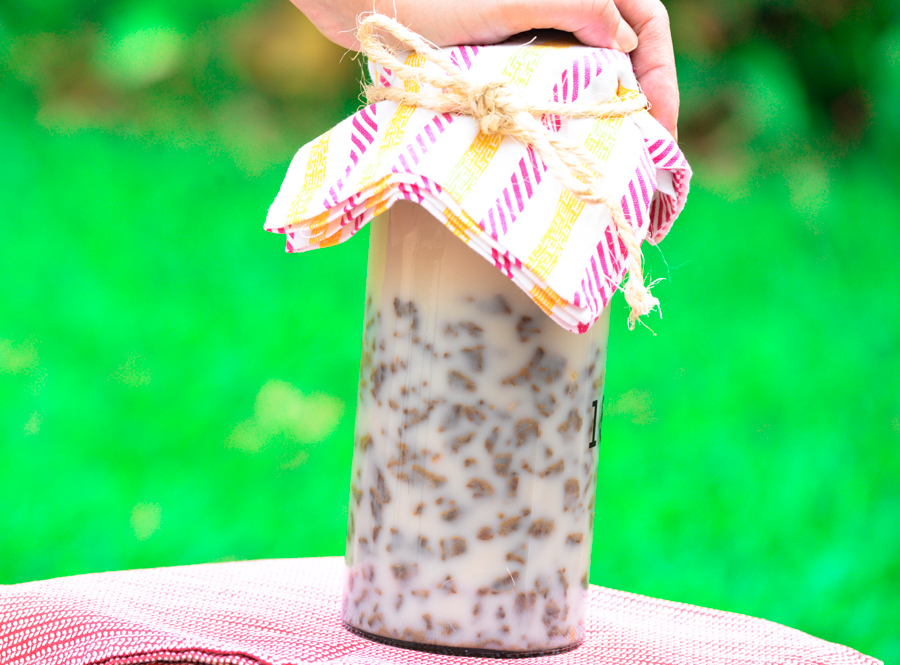
You need to use clean dry jars, pots and spoons to prevent the growth of microorganisms and to keep it safe for human consumption.
Follow us on instagram. I am loving the interactions going on instagram these days.
If you make this recipe, share your pictures on Facebook! I would love to see your creations!Hashtag them #Hadia's Lebanese Cuisine
Subscribe to Our Newsletter
Instructions
No Steps Found !
- Course : BREAKFAST, MAIN DISHES, Side
- Recipe Type : APPETIZERS, APPETIZERS, BREAKFAST, BreakFast, Gluten-free, LEBANESE RECIPES, MAIN DISHES, MAIN DISHES, Preserves, RECIPES FROM AROUND THE WORD, Snacks
- Ingredient : Egg, lamb, meat
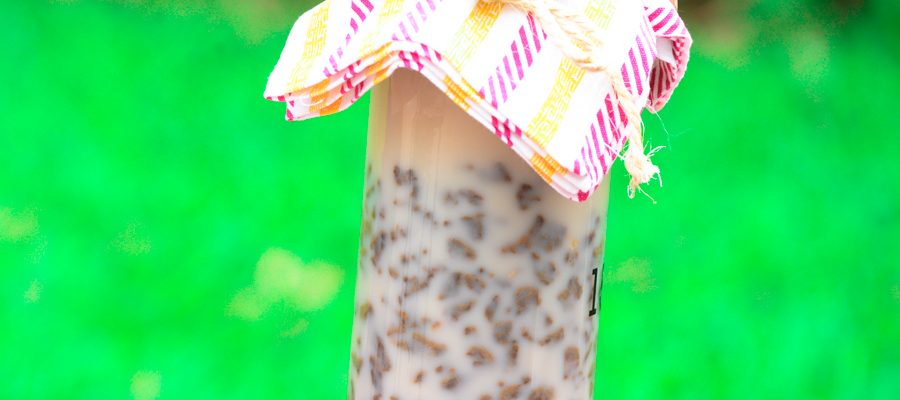
13 Responses to Awarma, Qawarm, Lebanese Lamb Confit
Leave a Reply Click here to cancel reply.
About Chef
Hadia Zebib
I am Hadia, the face behind Hadia’s Lebanese Cuisine. I grew up in Beirut Lebanon and I currently reside in Kinshasa, Congo with my husband and my three adorable sons, ...
Read more about this chef..

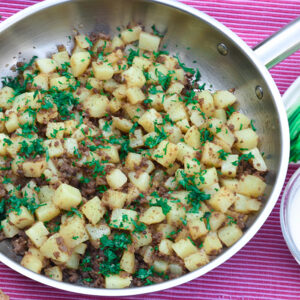
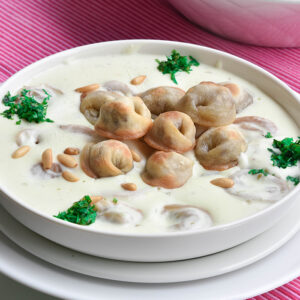
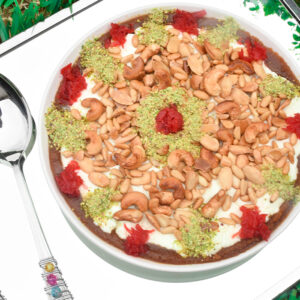


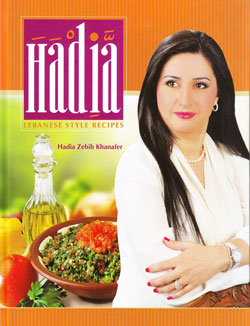
I was looking for a detailed awarma recipe. Thank you for sharing, Hadia. I love your recipes.
Terrific Rosi! Happy to hear from you. Enjoy! Xo xo.
Helllo this is my first time on your blog. thank you for the recipe! However a had a few questions:
1) how exactly do you cure the meat first? Can you give specifics as to amount of salt and also duration of refrigeration.
2) can I use other types of meat such as beef to make this?
3) Can I use ghee instead of animal fat.
4) can I use beef fat rather than lamb fat?
thanks for letting me know asap ….I really cant wait to try this recipe 🙂 nashr_1@hotmail.com
Hello Nashwa! 1-As I have mentioned in the ingredients, you need( 1+ 1/2 tablespoons) salt. Refrigerate the cured meat just while you are rendering the fat, about 30 minutes.
2-Usually lamb is used to make awarma, I have tested the recipe with goat meat and it was equally good, but never tested awarma with beef, since this is not the tradition and lamb is simply fattier than beef.
3- If you are using ghee instead of tallow than you will end up with meat in ghee which is not awarma. The concept of awarma is to cook meat in a copious amount of rendered fat.
4- I would not recommend beef fat.
Welcome Nashwa!
If I may, I’ll touch on questions 2 and 3. The Lebanese diaspora here in Canada very commonly uses beef to make awarma. In fact, when you ask a Lebanese butcher to prepare raw meat and fat for awarma, most of them will give you chopped beef fat and ground beef. Obviously the taste will be very different than if you were to make it with lamb or even more traditionnally mutton but lamb or mutton fat are just not readily available here. I wouldn’t recommend using ghee as the fat to cook the meat in. Awarma is a confit meat similar to duck confit and it requires to be cooked in its own rendered fat. If you have a good butcher near you, he’ll be able to hook you up with some fresh beef leaf fat to make this.
Thank you, Michael, for joining the conversation, I greatly appreciate it!! I never thought of making awarma with beef, since this is not the tradition in Lebanon. I could see from your comment, that the Lebanese community in Canada use beef since it is the most consumed meat there, I am pretty sure the result is not the same, but thank you for letting me know that it is doable at least, this could be helpful for future readers!! Xo xo
Hello there,
In order to simplify the making of Qawarma, here is my approach:
I went to the local supermarket and bought 4 lbs of beef fat $1.39 per lb. I grounded the fat in the food processor and then I cooked the fat until completely melted. I added the lean meat in cubes from a leg of lamb combined with 2 lbs of beef round and cooked the ingredients at slow to medium fire for four hours. I added three T spoon of salt, 1 T spoon of black pepper and 1 T spoon of allspices. The outcome is a mild taste of lamb and very easy to find the ingredients from your local supermarket. Ps: beef never used traditionally because wasn’t available in the villages of Lebanon. Sheep or goat are affordable to own and to force feed a mix of mulberry tree leaves combined with grain and salt to fatten the animal unlike a cow or a bull which is used to plow the fields. The bull or cow will yield too much meat to handle in the absence of modern day refrigeration.
Great recipe! I prefer to cook the moisture out of the meat before adding the fat to it.
Jack, I can understand your point. You reminded of my mom. There is always a debate with her about the kibbeh filling. Some folks sweet the onions (talking about the kibbeh filling) before adding the minced meat. She would stricktly cook the meat until all the fluids evaporate, and then she would add the onions. There is always a room for personal preference!! Welcome Jack!
Hello Hadia, I am Lebanese living in the UK but was born and grew up in Sierra Leone. I love Lebanese food! I also love confit de Canard which we buy from France. So now I can add confit of Lamb to my culinary skills, thanks! Living here in Kent, the Lamb is really good. We are also able to order Lamb from the Salt Marshes in Wales.. Once again, sincere thanks Hadia.
You are so lucky to have good lamb, Nuhad. Make a jar, keep it in your fridge, it comes in handy to add to your eggs, hummus or even with kishik, if you are familiar with it! It is highly cured with salt, you don’t need to add salt to the food added to awarma since it is a bit on the salty side, thank you for stopping by. Xo xo
Hello Hadia,
Here is a tip for all north American that cannot find Liyye for this confit. I consulted with my cousin in Lebanon about my problem and he suggested I use an American-raised Lamb’s split breast to make the Awarma. Debone the breast, separate the fat from the meat and bones, dice them, then dice the meat and then use the recipe above.
The American Lamb split breast can be found at Walmart.
It worked for me and I use it a lot because liyye is not available.
Good luck, I hope this helps
That’s amazing Antoine, thanks for sharing your experience with us. This could be helpful to our readers in the US. Xoxo.